Key Takeaways
- AI startups focused on specialized industry applications rather than general models are projected to see the highest growth potential in 2026
- Healthcare AI companies like Insilico Medicine and Hippocratic AI are revolutionizing drug discovery and patient care with breakthrough technologies
- Infrastructure players building the foundation for AI deployment will be essential investments as compute demands continue to grow exponentially
- Emerging market AI companies from India, South Korea, and Africa are challenging Silicon Valley’s dominance with innovative solutions tailored to local needs
- Successful AI founders in 2026 will increasingly prioritize safety, ethics and governance alongside technological innovation
AI Revolution in 2026: The Startups Reshaping Our Future

“The AI Revolution: How Artificial …” from vocal.media and used with no modifications.
The artificial intelligence landscape of 2026 bears little resemblance to what we knew just a few years ago. Computing power has doubled yet again, training costs have plummeted, and specialized AI applications are delivering tangible ROI across industries that once viewed the technology with skepticism. We’re witnessing a profound shift from general-purpose models to specialized AI systems designed to solve specific business problems with unprecedented precision. This transformation is being led by a new generation of AI startups that combine technical brilliance with domain expertise to create solutions that actually work.
While tech giants continue their AI arms race, it’s the nimble startups that are often finding the most innovative applications and solving the thorniest challenges. These companies are building everything from next-generation foundation models to specialized tools that transform healthcare, finance, education and manufacturing. At Market Business Watch, we’ve analyzed hundreds of emerging AI companies to identify those with the strongest growth potential, most innovative technology, and clearest path to sustained profitability in 2026 and beyond.
Our analysis reveals that the most promising AI startups of 2026 share several key characteristics: they’re building proprietary data moats, focusing on enterprise revenue rather than consumer hype, prioritizing safety and ethics alongside innovation, and creating tangible economic value rather than simply chasing technological breakthroughs. The companies highlighted in this report represent the vanguard of AI innovation across multiple sectors and geographies, offering a glimpse into how artificial intelligence will reshape our world in the coming years.
AI Startups Poised to Dominate in 2026
The AI startup ecosystem has matured dramatically since the early generative AI boom of 2022-23. Today’s leaders have moved beyond impressive demos to building sustainable businesses with robust revenue models. The following companies represent the cream of the crop – startups that have demonstrated exceptional technology, traction, and potential to reshape industries.
Anthropic: Beyond Claude to Next-Gen AI Safety

“AI startup Anthropic …” from www.theguardian.com and used with no modifications.
Once considered merely an OpenAI competitor, Anthropic has cemented its position as the leader in responsible AI development with its Constitutional AI approach. The company’s Claude 4 model now consistently outperforms competitors on reasoning, factuality, and harmlessness benchmarks. What makes Anthropic especially noteworthy heading into 2026 is their pioneering work on AI alignment and interpretability – making powerful AI systems both safer and more transparent.
Anthropic has secured over $8 billion in funding since its founding, with major investments from Amazon, Google, and Spark Capital. Their enterprise offering has gained significant traction, particularly in highly regulated industries like healthcare, finance, and legal services where safety and reliability are paramount. Unlike competitors pursuing maximum capabilities at all costs, Anthropic’s measured approach to scaling and safety has won the trust of major corporations and governments worldwide.
For businesses looking to integrate AI solutions, exploring the best AI tools for small businesses can be a great starting point.
The company’s research team continues to publish groundbreaking work on AI safety techniques like constitutional AI, RLHF advancements, and interpretability tools that make black-box models more transparent. Their novel approach to building AI systems that can explain their reasoning processes has opened new possibilities for deploying AI in critical applications where decisions must be auditable and explainable.
For businesses looking to leverage such technologies, exploring the best AI tools and software can be a great starting point.
“What separates Anthropic from other leading AI labs isn’t just their technical capabilities, but their demonstrated commitment to building AI systems that align with human values. Their constitutional approach provides a blueprint for how powerful AI systems can be developed responsibly.” — Dr. Sarah Johnson, AI Ethics Researcher
Cohere: Transforming Enterprise Language Models

“Enterprise AI: Private, Secure …” from cohere.com and used with no modifications.
While consumer attention has focused on chatbots, Cohere has quietly built the most sophisticated enterprise-focused language AI platform on the market. Their Command and Embed models are now powering critical text processing workflows at thousands of businesses worldwide. The company’s laser focus on business applications rather than consumer products has allowed them to develop specialized capabilities that deliver measurable ROI for enterprises. To explore more about similar innovations, check out these AI startups to watch.
- Industry-leading text embedding models that accurately represent semantic meaning
- Domain-specific model customization requiring minimal training data
- Enterprise-grade security, compliance, and data privacy features
- Highly efficient inference options that reduce deployment costs
- Seamless integration with existing enterprise workflows and systems
Cohere’s 2025 acquisition of data processing specialist Patterns significantly expanded their capabilities for handling structured enterprise data alongside unstructured text. This strategic move positioned them to offer end-to-end solutions for automating complex business processes that require understanding both documents and databases. Their recent partnership with major cloud providers has made their technology accessible to a wider range of businesses, from startups to Fortune 500 companies.
Adept AI: Turning AI into Your Ultimate Work Assistant
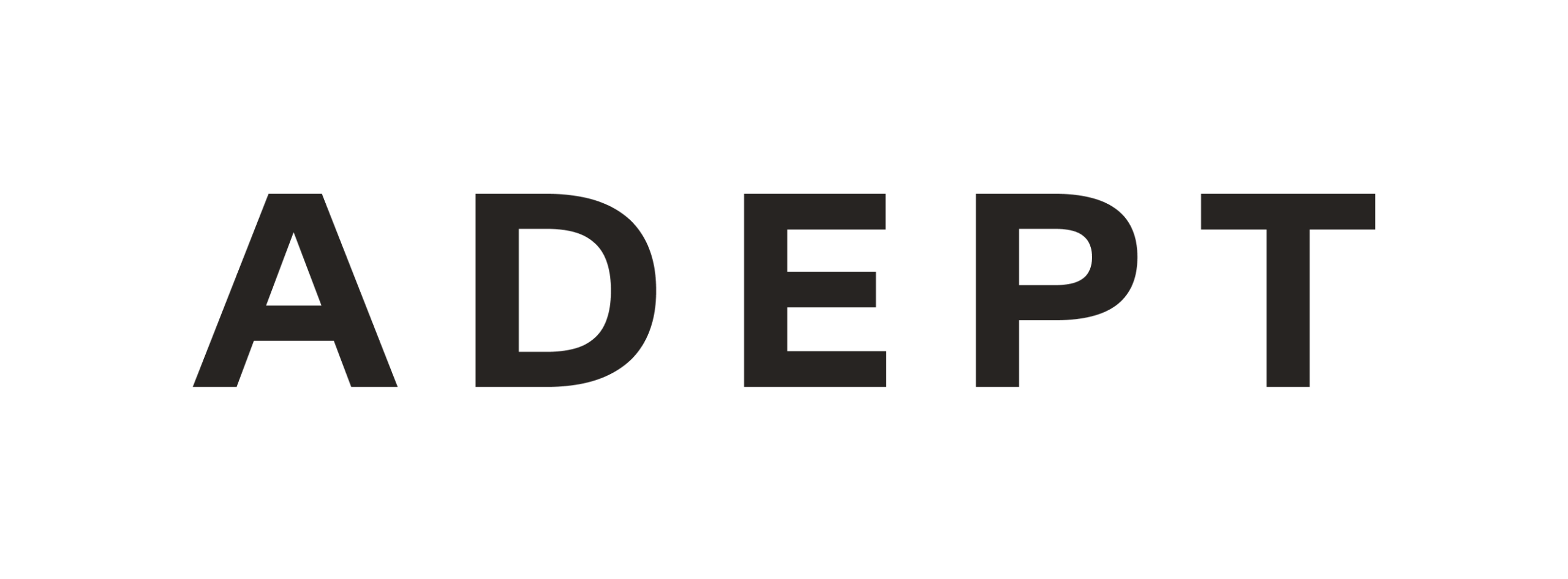
“Adept: AI that powers the workforce” from www.adept.ai and used with no modifications.
Adept AI has revolutionized how knowledge workers interact with software through their Action Transformer (ACT) technology. Their flagship product, Adept Copilot, now seamlessly navigates dozens of enterprise applications, executing complex multi-step workflows that previously required human intervention. The company’s approach of building AI that can directly operate software interfaces rather than just generating text has unlocked productivity gains that more traditional language models can’t match.
Stability AI: Creating the Future of Image Generation
“Stability AI and Arm Bring On-Device …” from stability.ai and used with no modifications.
After weathering early financial challenges, Stability AI has emerged stronger with a clear business model focused on industry-specific image generation capabilities. Their Stable Diffusion 5 model set new standards for photorealism and compositional understanding, while their specialized versions for medical imaging, architectural visualization, and product design have created valuable revenue streams. Their open-source foundation combined with premium enterprise offerings has created a thriving ecosystem of developers and business customers.
Inflection AI: Making AI Companions Truly Human-Like

“Inflection AI” from inflection.ai and used with no modifications.
Inflection AI has emerged as the undisputed leader in creating AI companions that feel authentically human. Their flagship product, Pi, has evolved from an interesting experiment to an indispensable digital companion for millions of users worldwide. What sets Inflection apart is their breakthrough work on emotional intelligence and conversational memory, allowing Pi to maintain consistent, meaningful relationships with users over extended periods.
Following their 2025 strategic partnership with a leading smartphone manufacturer, Inflection’s technology now comes pre-installed on millions of devices, creating a massive distribution advantage. Their API business has also flourished, with companies across healthcare, education, and elder care integrating Inflection’s empathetic AI capabilities into specialized applications. Unlike competitors focused solely on information retrieval, Inflection has pioneered AI that prioritizes emotional connection and wellbeing.
Healthcare AI Breakthroughs Coming in 2026
The healthcare sector stands at the precipice of an AI-driven revolution, with 2026 marking a watershed moment when theoretical possibilities transform into clinical realities. Regulatory frameworks have finally caught up with technological capabilities, paving the way for AI systems that can diagnose diseases, discover drugs, and deliver personalized care at scale. The startups leading this transformation are combining deep biomedical expertise with cutting-edge AI capabilities to solve healthcare’s most intractable problems.
Insilico Medicine: Drug Discovery at Lightning Speed
“Main | Insilico Medicine” from insilico.com and used with no modifications.
Insilico Medicine has shattered pharmaceutical industry expectations with their end-to-end AI drug discovery platform. Their integrated system—combining target identification, molecular design, and clinical prediction—has slashed drug development timelines from years to months. The company’s breakthrough came with their first fully AI-discovered compound receiving FDA approval in 2025, validating their approach and triggering partnerships with eight of the top ten global pharmaceutical companies.
What makes Insilico exceptional is their unique combination of proprietary data assets, specialized AI models trained on biological processes, and automated laboratory systems that can rapidly test AI-generated molecules. Their pipeline now includes promising candidates for treating previously “undruggable” targets in cancer, fibrosis, and neurodegenerative diseases. With over 30 active programs in development and a valuation exceeding $4 billion following their 2025 Series D round, Insilico is positioned to fundamentally transform how medicines are discovered.
Hippocratic AI: The Medical Expert That Never Sleeps

“About — Hippocratic AI” from www.hippocraticai.com and used with no modifications.
Hippocratic AI has emerged as healthcare’s most trusted large language model, purpose-built for clinical applications with an unwavering focus on patient safety. Unlike general-purpose AI systems retrofitted for healthcare, Hippocratic AI was trained from the ground up on medical literature, clinical guidelines, and de-identified patient records, giving it specialized expertise across dozens of medical specialties. Their safety-first approach, including built-in uncertainty quantification and continuous human expert validation, has earned them unprecedented regulatory clearances for autonomous patient interactions.
The company’s initial applications in patient education and chronic disease management have demonstrated remarkable clinical outcomes, with documented improvements in medication adherence, lifestyle modifications, and preventive care utilization. Their 2025 partnership with a major health insurance provider brought their technology to over 20 million members, creating a flywheel of improved outcomes and reduced costs. Most impressively, Hippocratic AI has maintained a perfect safety record despite handling millions of patient interactions daily, setting a new standard for responsible AI deployment in healthcare.
PathAI: Revolutionizing Disease Diagnosis
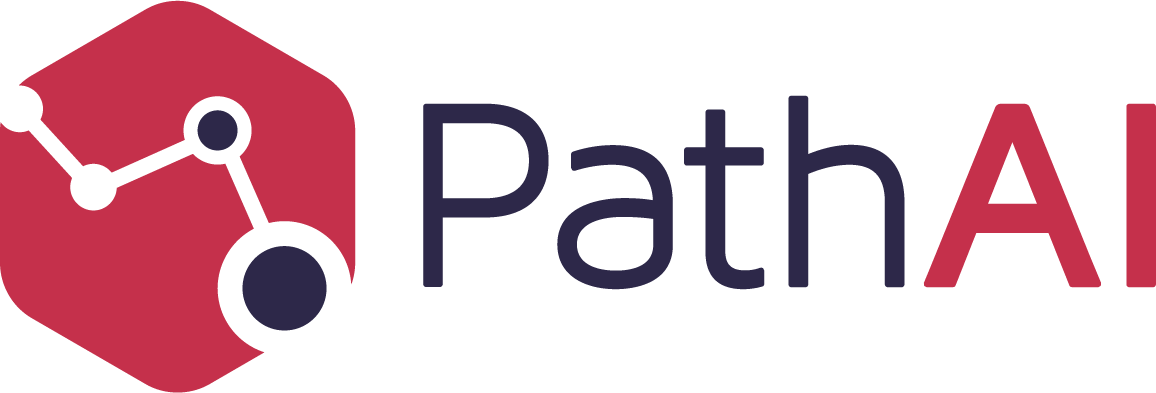
“PathAI | Pathology Transformed” from www.pathai.com and used with no modifications.
PathAI has transformed pathology from a subjective art to a precise science through their advanced computer vision models that analyze tissue samples with superhuman accuracy. Their AI-powered diagnostic platform now covers over 50 different disease states across oncology, immunology, and hepatology, achieving diagnostic accuracy that consistently exceeds human pathologists. What began as a narrow application in cancer detection has expanded into a comprehensive diagnostic ecosystem used by thousands of hospitals worldwide.
The company’s masterstroke was creating a virtuous cycle of data acquisition and model improvement through their digital pathology platform, which now houses the world’s largest repository of annotated pathology images. This proprietary dataset has become an insurmountable moat against competitors, allowing PathAI to continuously improve their diagnostic algorithms. Their recent expansion into spatial biology and multi-omics integration positions them to not just diagnose disease but predict treatment response with unprecedented precision.
AI Infrastructure Leaders Building Tomorrow’s Foundation
While consumer-facing AI applications capture headlines, the companies building the fundamental infrastructure for AI development and deployment may represent the most valuable investment opportunities in the sector. These infrastructure players are creating the essential building blocks—from specialized hardware to development tools—that make the AI revolution possible. As AI workloads continue to grow exponentially, these companies are positioned to capture an outsized share of the value created.
Cerebras Systems: The Brain-Scale Computing Company

“AI computing startup Cerebras releases …” from www.reuters.com and used with no modifications.
Cerebras Systems has established itself as the leader in specialized AI training hardware with their revolutionary Wafer-Scale Engine (WSE) technology. Their third-generation CS-3 system, featuring a single massive chip containing over 4 trillion transistors, has become the platform of choice for training the world’s most advanced AI models. What sets Cerebras apart is not just raw computational power but their innovative architecture that dramatically simplifies the complexities of distributed training.
The company’s strategic pivot to offering cloud-based access to their systems has democratized access to their technology, allowing startups and researchers to harness wafer-scale computing without massive capital expenditures. Their recent breakthrough in sparse training techniques has further cemented their advantage, enabling models with trillions of parameters to be trained efficiently on their hardware. With major AI labs now standardizing on Cerebras for their most ambitious projects, the company has positioned itself as the essential infrastructure provider for frontier AI research.
Hugging Face: Democratizing AI Development

“Brand assets – Hugging Face” from huggingface.co and used with no modifications.
Hugging Face has evolved from an AI model repository to the central hub of the open-source AI ecosystem, with over 500,000 models and datasets now available on their platform. Their Transformers library has become the standard toolkit for working with language models, used by millions of developers worldwide. The company’s genius was creating a virtuous cycle where their open-source tools drove platform adoption, which in turn attracted more contributors and users to their ecosystem.
Modal: Serverless Computing for AI Applications

“Modal: High-performance AI infrastructure” from modal.com and used with no modifications.
Modal has emerged as the definitive solution for deploying AI applications at scale with their innovative serverless infrastructure. Their platform abstracts away the complexities of provisioning GPUs, orchestrating containers, and managing computation, allowing developers to focus purely on building AI applications. Unlike general-purpose cloud providers, Modal’s infrastructure is optimized specifically for AI workloads, providing intelligent scaling, cost optimization, and specialized runtimes for the most popular AI frameworks.
Their breakthrough came with the introduction of their Hybrid Execution Engine, which automatically distributes AI workloads across multiple specialized hardware types based on the specific characteristics of each operation. This approach has delivered dramatic cost savings and performance improvements for thousands of AI applications running on their platform. Modal’s developer-first approach, with elegant Python APIs and comprehensive observability tools, has made them the preferred infrastructure choice for AI startups and research labs.
Emerging Market AI Disruptors to Watch
The next wave of AI innovation is increasingly coming from beyond Silicon Valley, as entrepreneurs in emerging markets build solutions tailored to local needs and leverage unique data advantages. These companies are not simply adapting Western AI models but creating fundamentally new approaches that reflect different cultural contexts, language requirements, and business challenges. As AI adoption accelerates globally, these emerging market disruptors are positioned to capture massive opportunities in regions representing the majority of the world’s population.
Sarvam AI: India’s Answer to Conversational AI

“Sarvam AI | Sovereign Indian AI …” from www.sarvam.ai and used with no modifications.
Sarvam AI has emerged as India’s premier AI research lab, focusing on building large language models optimized for India’s diverse linguistic landscape. Their breakthrough innovation came with the release of Bhasha LLM, the first foundation model trained on 22 official Indian languages that achieves near-human performance across all of them. This technological achievement has unlocked AI applications for hundreds of millions of Indians who were previously excluded from the benefits of language AI due to the focus on English and other Western languages.
What makes Sarvam exceptional is their hybrid approach combining centralized research with a distributed ecosystem of specialized applications built on their platform. Their open-source model weights for Indian languages have spawned thousands of localized AI applications addressing uniquely Indian challenges in agriculture, healthcare, education, and government services. Their enterprise platform now powers customer service for major Indian banks, telecoms, and government agencies, handling millions of conversations daily in local languages and dialects.
Upstage: South Korea’s NLP Powerhouse
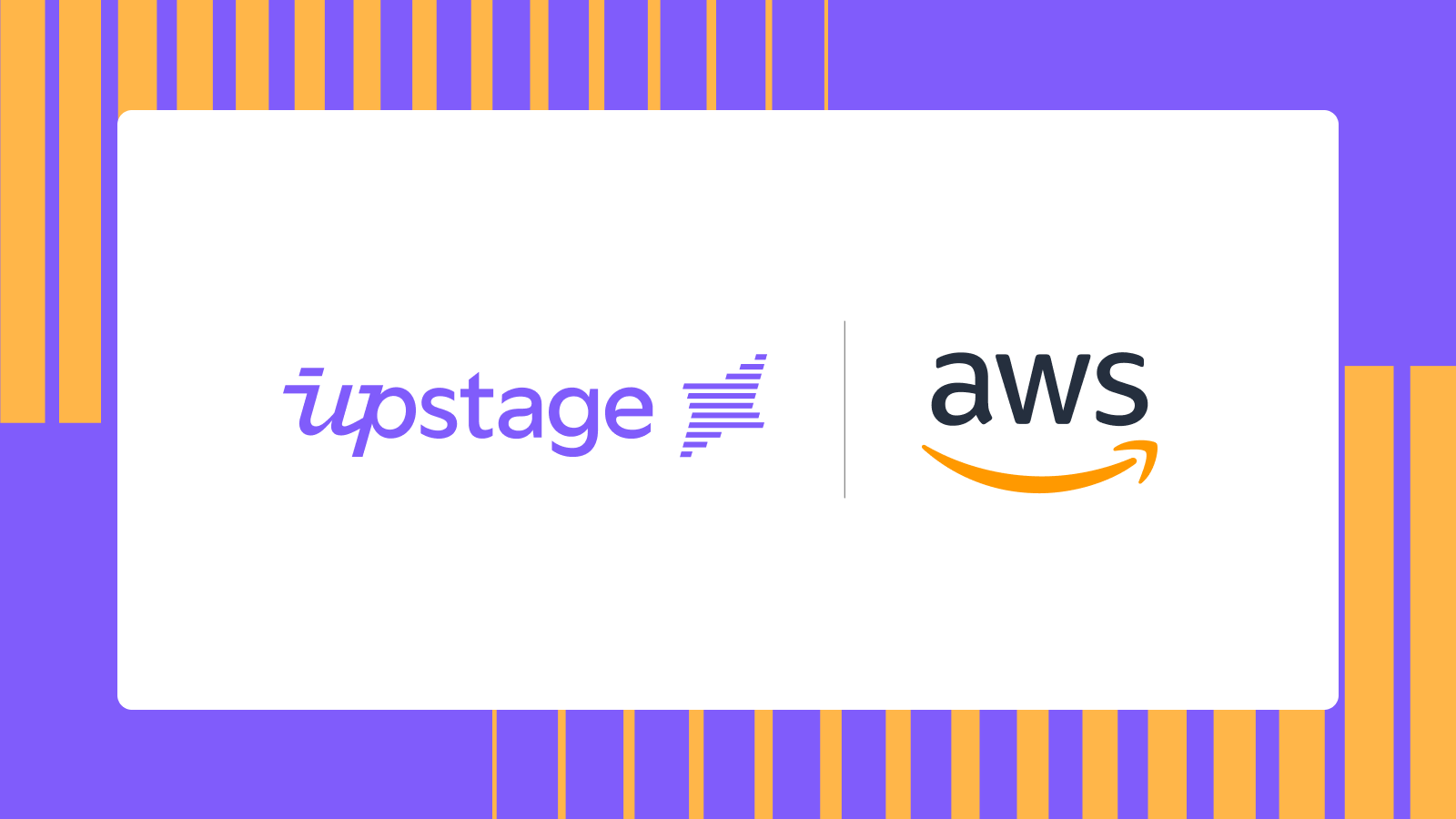
“Upstage Raises $72 Million in Series B …” from www.upstage.ai and used with no modifications.
Upstage has transformed from a small Korean NLP startup to a global leader in multilingual AI, with their models achieving state-of-the-art performance across East Asian languages. Their SOLAR model series has carved out a dominant position in Korean, Japanese, and Chinese language processing, areas where Western models still struggle with linguistic nuances and cultural context. The company’s success in Asian markets has attracted partnerships with major technology platforms and enterprises across the region.
Their competitive advantage stems from proprietary training techniques specifically designed for character-based languages and massive datasets curated from local content sources. Upstage’s enterprise platform now powers everything from real-time translation for multinational corporations to content moderation for Asia’s largest social platforms. Their recent expansion into Southeast Asian languages positions them to capture a market of over 2 billion potential users across the fastest-growing economic region in the world.
InstaDeep: Africa’s AI Pioneer

“AI Archives | InstaDeep – Decision …” from instadeep.com and used with no modifications.
Following its partial acquisition by BioNTech, InstaDeep has leveraged this partnership to build cutting-edge AI systems for drug discovery and protein design while maintaining its independence in other sectors. The company has established itself as Africa’s preeminent AI lab, with research centers in Tunisia, Nigeria, and Kenya developing novel applications for the continent’s unique challenges. Their breakthroughs in climate-resilient agriculture, disease surveillance, and distributed renewable energy have demonstrated how AI can address critical needs in developing economies.
InstaDeep’s genius lies in combining world-class AI research with deep contextual understanding of African markets and challenges. Their decision intelligence platform now helps governments and businesses across the continent optimize resource allocation, supply chains, and infrastructure development. By training local AI talent through their extensive fellowship programs, InstaDeep has also created Africa’s most vibrant AI ecosystem, with alumni founding dozens of specialized AI startups addressing local needs.
Consumer AI Applications Set to Explode
While enterprise AI adoption drives most of the sector’s revenue today, consumer applications are entering a new phase of growth as the technology becomes more accessible, personalized, and embedded in everyday devices. The most promising consumer AI startups are moving beyond novelty to create genuinely useful products that solve real problems and create new capabilities for users. These companies are finding innovative ways to monetize consumer AI beyond advertising, building sustainable business models that align with creating genuine user value.
Character.AI: Personalized AI Companions
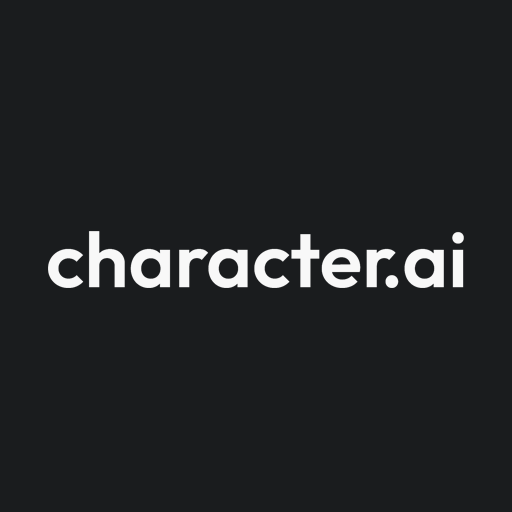
“Our Next Phase of Growth” from blog.character.ai and used with no modifications.
Character.AI has evolved from an experimental platform to a cultural phenomenon, with over 100 million monthly active users engaging with their AI characters. What began as creative role-play has transformed into a sophisticated ecosystem of utility and entertainment applications, from AI tutors that adapt to individual learning styles to companion characters that provide emotional support and reduce loneliness. Their breakthrough technological innovation has been developing models that maintain consistent personality, memory, and relationship dynamics over thousands of interactions.
The company’s “character marketplace” now features over 10 million user-created characters alongside premium licensed personalities from entertainment, sports, and education. Their subscription model has proven remarkably successful, with conversion rates exceeding industry expectations as users willingly pay for deeper relationships with their favorite AI companions. Character.AI’s recent partnerships with major media companies to create interactive AI versions of beloved fictional characters has opened new revenue streams and attracted audiences beyond traditional tech early adopters.
Rabbit: Reimagining Mobile AI Interfaces

“rabbit r1 – your AI assistant device” from www.rabbit.tech and used with no modifications.
After their initial r1 hardware launch, Rabbit pivoted to develop the revolutionary Rabbit OS – an AI-native interface layer that works across mobile devices. Their approach of using multimodal AI to create a natural language interface for accomplishing complex tasks has resonated with users frustrated by the limitations of app-based mobile experiences. Rather than requiring users to navigate dozens of separate applications, Rabbit OS allows natural requests like “book me a restaurant for dinner tomorrow that fits my dietary preferences and schedule” to be executed seamlessly across multiple services.
Rabbit’s competitive moat comes from their extensive library of “rabbits” – specialized AI agents trained to navigate specific applications and services through their visual interfaces. This approach eliminates the need for API integrations, allowing the system to work with virtually any digital service without formal partnerships. Their business model of charging both subscription fees from users and referral fees from services has created a sustainable growth engine. With major smartphone manufacturers now exploring integration of Rabbit OS as an alternative interface option, the company is positioned to fundamentally change how people interact with their devices.
Runway: AI Video Creation for Everyone
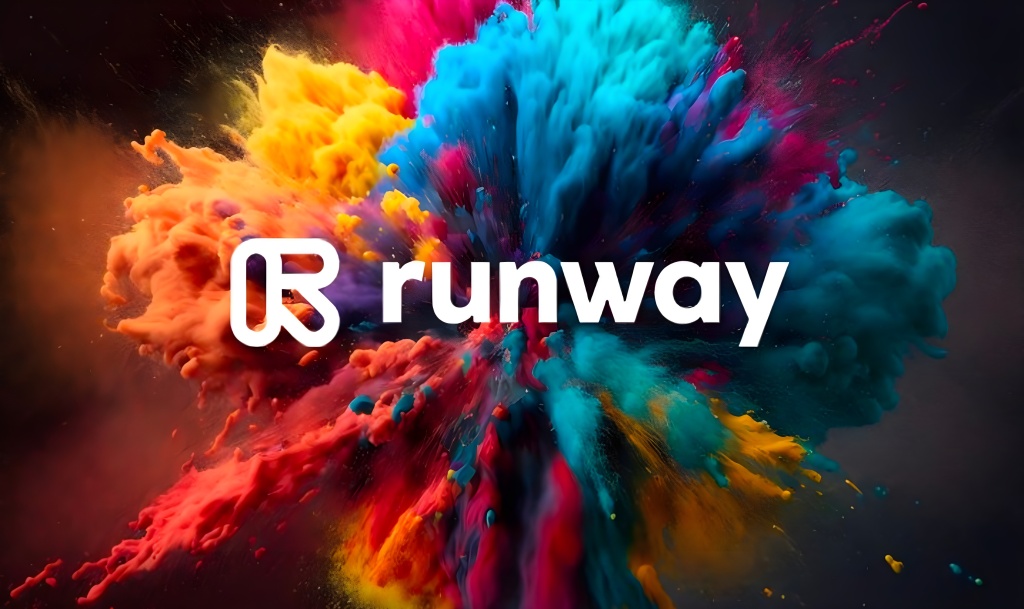
“Runway AI Review: Transforming Art with …” from the-tech-crib.com and used with no modifications.
Runway has transformed from an AI research startup to the dominant platform for AI-powered video creation, with their Gen-2 and subsequent models setting new standards for video generation quality. Their integrated studio platform now enables creators to generate, edit, and enhance video content with unprecedented ease, reducing production tasks that once required teams of specialists and expensive equipment to simple text prompts and intuitive controls. The platform’s adoption by Hollywood studios, advertising agencies, and independent creators has cemented Runway’s position as the “Adobe of generative AI.”
What separates Runway from competitors is their comprehensive approach that combines multiple AI technologies – text-to-video generation, intelligent editing tools, motion tracking, style transfer, and audio enhancement – into a coherent creative platform. Their recent introduction of “Video Worlds,” allowing users to create persistent stylistic environments for ongoing content creation, has opened new possibilities for consistent brand storytelling and virtual production. With over 5 million paying subscribers and integration deals with major content platforms, Runway is redefining how visual media is created in the AI era.
How to Spot the Next AI Unicorn Before Everyone Else
Identifying the next breakthrough AI startup before it becomes obvious requires looking beyond conventional metrics and understanding the unique dynamics of the AI sector. The most successful investors in this space combine technical knowledge with business acumen, recognizing patterns that indicate exceptional potential. While the specific applications of AI will continue to evolve, certain fundamental characteristics consistently appear in startups that achieve outsized success.
Look for Unique Data Advantages
The most valuable AI startups typically build proprietary data moats that are difficult for competitors to replicate. This might come through exclusive partnerships with data providers, innovative data collection mechanisms, or synthetic data generation capabilities. When evaluating an AI startup, ask how they acquire training data, whether they have exclusive access to valuable datasets, and how they create virtuous cycles where using their product generates more valuable data. The strongest companies create flywheel effects where their data advantage grows stronger with each user interaction, making it increasingly difficult for new entrants to compete effectively.
For more insights, explore the best AI tools and software for small businesses.
Check the Quality of Venture Capital Backing
The identity of early investors often reveals much about an AI startup’s potential. The most promising companies tend to attract specialized AI investors who bring technical expertise, industry connections, and pattern recognition from previous successful investments. Investors like AI Fund, Radical Ventures, or specialist partners at major firms have developed frameworks for evaluating technical risk and market opportunity specific to AI ventures.
- Look for investors with strong technical backgrounds who can properly evaluate algorithmic innovations
- Pay attention to strategic corporate investors who might become customers or acquirers
- Consider whether the investor syndicate includes both technical experts and domain specialists relevant to the startup’s target market
- Watch for repeat investors in successful AI companies who have demonstrated an ability to identify winners early
Another strong signal comes when respected AI researchers or entrepreneurs make personal investments, indicating technical credibility within the community. Similarly, when top AI labs spin out companies with backing from their parent organizations, this often indicates promising technology with significant commercial potential.
For more insights on such emerging technologies, check out the top 2026 cybersecurity threats that are shaping the future landscape.
Pay particular attention to the pace of follow-on funding – AI startups that quickly raise larger rounds from increasingly prestigious investors typically demonstrate rapid technical progress and market validation. However, be wary of companies raising massive amounts without clear technical differentiation or revenue traction, as these sometimes reflect hype rather than substance.
For more insights on how AI is transforming industries, check out the best AI tools for small businesses.
Where Smart Money is Investing in AI Now
The patterns of investment in AI have shifted dramatically as the sector has matured. Early-stage investors are increasingly focused on specific applications and technological niches rather than general-purpose platforms. This specialization reflects both the maturing AI ecosystem and the recognition that creating sustainable competitive advantages requires more than simply implementing existing open-source models. The most sophisticated investors are now looking beyond the obvious applications to identify emerging opportunities created by recent technological breakthroughs.
As we move deeper into 2026, several clear investment themes have emerged among the most successful AI venture funds and strategic investors. These areas represent not just current momentum but sustainable long-term opportunities where fundamental technological advantages can create enduring value. Understanding these investment patterns provides a window into how the AI landscape will evolve in the coming years.
Specialized AI Applications vs. General Models
The smartest capital is increasingly flowing toward AI startups solving specific industry problems rather than building general-purpose models. These specialized applications combine domain expertise with tailored AI approaches to deliver measurable ROI in sectors like healthcare, finance, logistics, and manufacturing. The most successful companies in this category don’t just apply generic AI to industry problems but develop specialized techniques, training data, and evaluation methods specifically designed for their target use cases. This trend reflects the recognition that while foundation models provide powerful capabilities, the greatest business value comes from adapting and extending these capabilities to address concrete business challenges.
AI Hardware: The Overlooked Opportunity
As AI workloads continue to grow exponentially, investments in specialized AI hardware have accelerated dramatically. This category includes not just chips optimized for training and inference but also novel memory architectures, photonic computing approaches, and specialized cooling solutions. What makes this sector particularly attractive is the clear economic incentive for adopting hardware that can reduce the enormous and growing costs of AI computation. Companies like Cerebras, Groq, and emerging startups focused on specialized inference hardware are attracting significant investment as the limitations of general-purpose GPUs for specific AI workloads become increasingly apparent.
AI Safety and Governance Tools
With regulatory scrutiny of AI intensifying globally, a new category of startups focused on AI safety, explainability, bias detection, and governance has emerged as a major investment theme. These companies provide the essential infrastructure that allows organizations to deploy AI responsibly while maintaining compliance with evolving regulations. The most promising startups in this space combine technical innovations in areas like model monitoring and explainability with workflow tools that help organizations implement responsible AI practices. As enterprise AI adoption accelerates, these governance solutions have become must-have components of the AI stack rather than optional additions.
The confluence of technological necessity and regulatory requirements has created perfect market conditions for companies in this category. As regulations like the EU AI Act and industry-specific rules create mandatory compliance requirements, organizations are allocating significant budgets to AI governance solutions that can mitigate risks and ensure adherence to evolving standards. This regulatory-driven demand creates highly predictable revenue streams that investors increasingly value in an uncertain economic environment.
The Bottom Line: AI Investments That Will Pay Off
- Focus on startups solving real business problems with measurable ROI rather than those pursuing capabilities for their own sake
- Prioritize teams that combine technical AI expertise with deep domain knowledge in their target industry
- Look for sustainable competitive advantages beyond just implementing available open-source models
- Consider infrastructure plays that benefit from the growth of AI regardless of which specific applications succeed
- Pay attention to companies building tools for responsible AI deployment as regulatory requirements increase
The AI startup landscape continues to evolve at breathtaking speed, with technical innovations creating new possibilities almost daily. However, the fundamentals of building valuable companies remain constant – solving real problems, creating sustainable advantages, and building products people will pay for. The most promising AI startups of 2026 combine cutting-edge technology with sound business fundamentals, creating solutions that deliver tangible value rather than just technological novelty.
For entrepreneurs looking to build the next great AI company, the message is clear: focus on problems worth solving rather than technology for its own sake. The most successful founders deeply understand both the capabilities and limitations of current AI systems and identify specific applications where these technologies can create transformative value. They build teams that combine AI expertise with domain knowledge, ensuring their solutions address real-world complexities rather than simplified versions of problems. For insights into emerging AI companies, check out this list of AI startups making an impact.
As we look toward the latter half of the decade, it’s clear that AI will continue transforming virtually every industry, creating enormous opportunities for startups that can harness these technologies effectively. The companies highlighted in this report represent the vanguard of this transformation – the pioneers building the AI future that will reshape our world in the years to come.
Frequently Asked Questions
As investors and entrepreneurs navigate the rapidly evolving AI landscape, certain questions consistently arise about how to evaluate opportunities and position for success. Below are answers to the most common questions about AI startup investing in 2026, reflecting the current state of the market and emerging best practices.
- What defines a true AI startup versus a company simply using AI technologies?
- How important is proprietary data versus algorithmic innovation?
- What valuation metrics make sense for early-stage AI companies?
- How can entrepreneurs differentiate in a crowded market?
- Which regulatory developments should investors and founders monitor closely?
Understanding these fundamental questions can help both investors and entrepreneurs make more informed decisions in a sector characterized by rapid technological change, evolving business models, and increasing regulatory scrutiny. While specific opportunities will continue to evolve, these principles provide a framework for evaluating the long-term potential of AI ventures.
The answers below reflect both historical patterns observed in successful AI companies and emerging trends that are reshaping the sector in 2026. They combine insights from venture investors, technical experts, and successful AI entrepreneurs to provide a comprehensive perspective on what drives success in this dynamic market.
For those interested in leveraging technology, exploring the best AI tools for small businesses can offer additional insights.
What makes an AI startup likely to succeed in the 2026 market?
The most successful AI startups in 2026 combine several critical elements: technical differentiation that creates sustainable advantages, domain expertise that ensures solutions address real problems, efficient paths to monetization, and responsible approaches to development. Beyond these fundamentals, the highest-potential companies typically demonstrate proprietary data advantages, efficient computing approaches that keep costs manageable, and business models that create network effects or data flywheels. Perhaps most importantly, they solve problems that truly matter – creating substantial economic value, addressing critical human needs, or enabling capabilities that were previously impossible.
How much should investors allocate to AI startups in a balanced portfolio?
Allocation recommendations vary widely based on investor profile, but sophisticated technology investors typically dedicate 15-25% of their venture portfolio to AI-focused startups across various stages and application areas. This allocation should be diversified across infrastructure, applications, and specialized technologies, with consideration for both near-term commercial opportunities and longer-term fundamental innovations. For individual investors with limited access to private AI companies, a combination of specialized public market ETFs, growth-stage public AI companies, and select later-stage private opportunities through platforms like AngelList or specialized funds can provide balanced exposure to the sector’s growth.
Are AI startups outside the US worth investing in?
Absolutely – some of the most promising AI opportunities now emerge from global innovation hubs beyond Silicon Valley. Countries like Canada, Israel, the UK, and increasingly China, India, and South Korea have developed vibrant AI ecosystems with unique strengths. These international startups often benefit from specialized talent pools, novel approaches to common problems, and access to unique datasets reflecting their local markets. Additionally, many international AI startups face less competitive funding environments, potentially creating more attractive entry valuations for investors who can identify quality opportunities.
For more insights, check out the best 2026 dropshipping trends that are shaping the global market.
The regionalization of AI development has accelerated as different markets develop specialized expertise aligned with their industrial strengths and talent pools. European startups often excel in industrial AI applications, Canadian companies in reinforcement learning and ethical AI, Israeli startups in security and computer vision, and Asian companies in hardware and language AI for non-Western languages. These regional specializations create opportunities to identify world-class companies outside the intensely competitive Silicon Valley funding environment.
What are the biggest risks when investing in early-stage AI companies?
The AI sector presents several unique risk factors beyond typical startup challenges. Technical risk remains substantial, as many promising approaches fail to scale beyond research environments or demonstrate commercially viable performance. Competitive risk is particularly acute, as open-source advancements can rapidly commoditize previously distinctive capabilities. Regulatory risk continues to grow as governments worldwide implement AI-specific regulations that can significantly impact business models and deployment timelines. Perhaps most importantly, the sector faces substantial valuation risk, with funding excitement sometimes disconnecting from fundamental business metrics.
Smart investors mitigate these risks through technical due diligence with domain experts, realistic assessment of defensible advantages, and careful evaluation of unit economics and capital efficiency. The most successful AI investors maintain realistic expectations about timelines for technology development and commercialization, recognizing that even the most promising AI startups typically require longer runways than software companies in other sectors. This patience, combined with rigorous evaluation of fundamental business metrics, provides the best protection against the sector’s inherent volatility.
How can retail investors get exposure to private AI startups?
While direct investment in early-stage AI startups remains challenging for retail investors, several pathways now exist to gain exposure to this sector. Specialized venture funds accessible through platforms like AngelList, Republic, and OurCrowd have lowered minimum investments, making previously inaccessible opportunities available to qualified individual investors. Secondary marketplaces like EquityZen and Forge Global occasionally offer shares in later-stage AI unicorns, providing another entry point. For broader exposure, several specialized AI-focused ETFs now track both pure-play AI companies and traditional businesses making significant AI investments.
Perhaps the most accessible approach is building a portfolio of public companies with significant AI capabilities and investments. This includes not just the obvious large technology platforms but also specialized AI infrastructure providers, semiconductor companies enabling AI computation, and industry-specific players deploying AI to transform their sectors. This public market strategy, potentially complemented with limited private allocations where accessible, allows retail investors to participate in the AI revolution without requiring direct access to the earliest-stage private opportunities.
At Market Business Watch, we’re committed to helping you navigate the exciting but complex world of AI innovation and investment. Whether you’re an entrepreneur building the next breakthrough AI startup or an investor seeking to participate in this technological revolution, understanding these emerging leaders provides valuable insight into where the sector is headed and how to position for success.

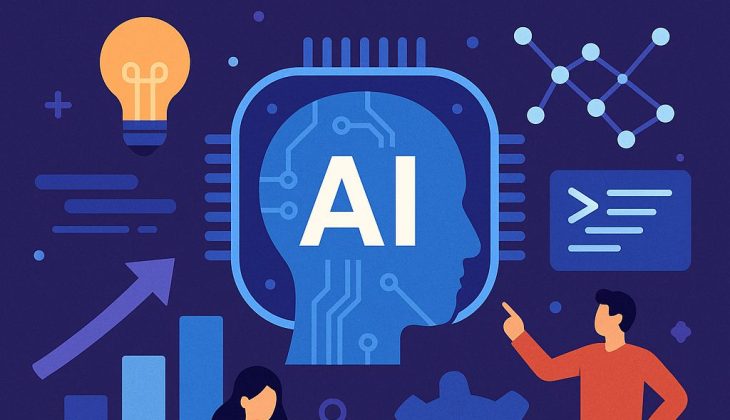


Join the Conversation